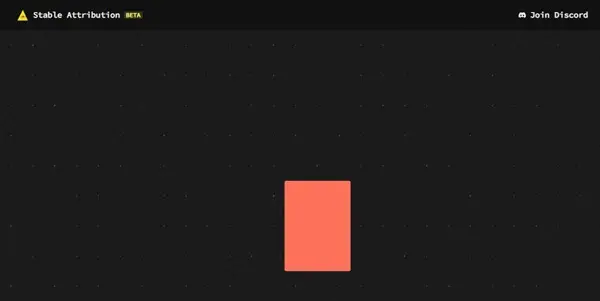Stable Attribution

Quickly find out who is behind the design of an AI-generated image
Stable Attribution: Unmasking the Creators of AI-Generated Images
The rapid advancement of AI image generation tools has brought about exciting new creative possibilities, but it has also presented challenges in verifying the origin and authorship of images. This is where Stable Attribution steps in, offering a free and efficient solution to quickly identify the likely AI model behind a given image.
What Stable Attribution Does
Stable Attribution is a tool categorized under RIP AI that specializes in reverse image search specifically designed for AI-generated content. Its primary function is to analyze an image and determine which AI model was most likely used to create it. It doesn't identify the specific user who generated the image, but rather pinpoints the underlying AI model (e.g., Stable Diffusion, Midjourney, Dall-E 2). This is crucial for establishing provenance, verifying authenticity, and understanding the technological landscape of AI art.
Main Features and Benefits
- Rapid Identification: Stable Attribution provides quick and efficient results, helping users swiftly determine the probable source AI model.
- Ease of Use: The tool is designed for simplicity and requires minimal technical expertise. Users simply upload the image, and the results are displayed clearly.
- Free Access: Stable Attribution is entirely free to use, making it accessible to a broad range of users, from artists and researchers to educators and enthusiasts.
- Transparency: By identifying the AI model, Stable Attribution promotes transparency in the rapidly evolving world of AI-generated art.
- Improved Copyright Awareness: While not solving copyright issues entirely, it provides a vital tool for understanding the origin of an image and potentially tracing its usage.
Use Cases and Applications
Stable Attribution finds applications in various fields:
- Art Authentication: Determining whether an artwork is truly AI-generated and identifying the model used can be valuable for verifying authenticity and provenance.
- Education and Research: Researchers studying the development and impact of AI image generation can use Stable Attribution to analyze datasets and understand model usage trends.
- Content Moderation: Platforms and organizations concerned with AI-generated content can leverage Stable Attribution to identify potentially problematic or infringing images.
- Copyright Infringement Investigation: While not a definitive solution for copyright, knowing the generating model can be a starting point in investigating potential violations.
- Digital Forensics: Attribution tools like Stable Attribution can become an important part of the digital forensics toolkit when dealing with images of unknown origin.
Comparison to Similar Tools
While several tools are emerging in this space, Stable Attribution distinguishes itself through its ease of use and free access. Many competing tools may offer more detailed analysis or incorporate other features, but often come with a subscription fee. A direct comparison would require analyzing the specific capabilities and pricing of each competitor, which is beyond the scope of this article. However, the key differentiator for Stable Attribution remains its accessibility.
Pricing Information
Stable Attribution is currently completely free to use. There are no subscription fees, paywalls, or hidden costs associated with utilizing the tool.
Conclusion
Stable Attribution provides a valuable and accessible resource for identifying the AI models behind generated images. Its free access and simple interface make it a powerful tool for a wide range of users, contributing to transparency and responsible use of AI image generation technology. While not a panacea for all attribution challenges, it represents a significant step forward in understanding the provenance of AI-generated art and other digital content.